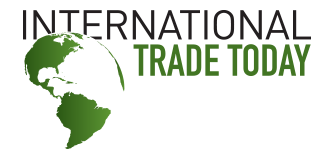ITC: Bifacial Solar Panels Vast Majority of Imports; Domestic Producers Still Not Profitable
Midway through the second term of solar safeguards, imports of solar panels (modules) and cells have been climbing, and the market has almost entirely shifted to bifacial solar panels, which were at first carved out of the safeguard. Whether a decision to revoke that exclusion in 2019 was legal is still being litigated (see 2311130031 and 2401290014).
According to a recent report from the International Trade Commission, domestic panel manufacturers have seen positive effects from the solar safeguards, which currently are at 14.25%, but domestic manufacturing is still not profitable, even though losses are narrowing.
The ITC noted that the solar market has been affected by many government actions during the last six years the safeguard has been in place, including Section 301 and antidumping and countervailing duties on some products and inputs; the Commerce Department's anti-circumvention inquiry and moratorium on AD/CVD collections from the countries covered by that inquiry; detentions of solar panels and cells under the Uyghur Forced Labor Prevention Act; and the exemption of bifacial modules from the safeguard.
The tariff level of the safeguard has declined over time, as well, and the quantity of cells that can enter under a tariff rate quota has increased. In 2022, only 53% of the cell quota was filled. More than half the cells are from Malaysia.
Although the safeguard covers both cells and panels, there is still no U.S. production of cells. However, due to the Inflation Reduction Act manufacturing incentives, some companies plan to manufacture cells in coming years.
Bifacial panels have become the vast majority of imports, and those panels are used in more applications now. From January to June 2023, 11.9 million bifacial modules were imported, and only 1.7 million non-bifacial modules were imported. In comparison, in 2020, for the whole year, the number of bifacial imports was almost 6.2 million and the number of imported one-sided panels was almost 10 million.
The report shielded data on the domestic market share for solar panels. However, it said that import market share fell between 2020 and 2022, but has been rising since 2021. "Most trade and employment indicators for the domestic [solar] module industry were higher in 2022 compared to 2017, the year prior to imposition of the safeguard measures, including apparent U.S. consumption, U.S. producers’ market share, capacity, production, and employment. While module producers continue to experience operating and net losses, their combined ratios of operating and net income to net sales have improved in 2022 compared to 2017," the report said.
Even though no cells and very few panels are subject to duties under the safeguard, the price for cells and modules is going up. Employment among solar manufacturers has not grown consistently during the safeguards; it fell from 2020-2022, but grew in early 2023.
Manufacturers who provided comments on the safeguard disagreed on its effectiveness. Some said the quotas for cells should be higher; others said the quotas shielding cells from tariffs were hurting the ability to launch cell production.
Six companies said the bifacial exclusion hurt the effectiveness of the safeguard, one said it strengthened it, and six said it had no effect.
Canadian Solar USA, Heliene and Silfab said the tariff rate quota volume and projected domestic production will not be enough to meet panel manufacturers' demand through February 2026, when the safeguard is scheduled to end.
"The U.S.-Canadian producers argue that the TRQ on cells should be removed or increased to at least 20 GW, otherwise U.S. module assemblers will be forced to incur costly tariffs on cell imports," the report said.
First Solar argued that not only is increasing the cell quota damaging to future cell production, it also hurts panel manufacturers' ability to charge higher prices, "as declining raw materials prices are already contributing to price declines for modules in the United States."
Hanwha Q Cells agreed that Section 301 duties are undermining the safeguard's benefits, and said so is the bifacial exclusion.
"It states that the increase in imports of bifacial modules has contributed to declines in module prices and U.S. module assemblers’ share of the U.S. market despite increased apparent U.S. consumption," the report said. However, Hanwha says there should either be no duty on cells, or the quota should be higher. "Hanwha also argues that the TRQ on cells has no impact on domestic producers’ decisions to build new cell facilities and that all such decisions will be driven by the IRA rather than the TRQ."
SEIA argued for a higher TRQ and said the bifacial exclusion had not undermined the relief. Suniva said the TRQ does undermine cell producers, as does the bifacial module exclusion. However, it said the safeguard shouldn't apply to Cambodia at all, due to its developing country status. Cambodia provided 12% of imports in the first half of 2023.
The report said the domestic industry no longer would need import protection if it were profitable, increased production and diversity of its product offerings, and had domestic upstream inputs, such as polysilicon, wafers, solar glass and aluminum frames.
In order to adapt successfully to imports, the solar industry will need to become profitable once again, increase production, increase the diversity of its product offerings, and revive upstream production that has relocated overseas.



